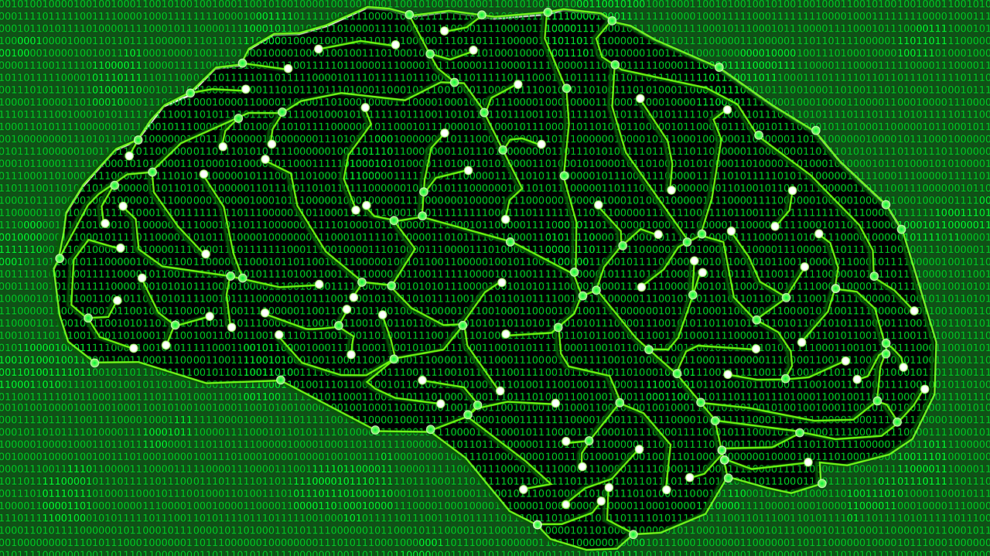In 1959, Arthur Samuel derived the term of machine learning and defined it as a field of study that provides computers the ability to learn without the addition of explicit coding. Machine learning enables computers to think and learn from their surroundings using various data models as well as trial and error algorithms. The term ‘machine learning’ is self-explanatory as it provides the computer with the ability to think and make decisions by using various data training and testing algorithms, thus giving the ‘machines’ the ability of ‘learning’ and having control of driving conclusions based on the trained data. The addition to machine learning can work great wonders in cyber security.
Machine Learning: Definition and Types
Machine learning is a branch of artificial intelligence, which is a sophisticated technology that performs tasks without human help. The algorithms are designed to learn from experience and better perform at complex tasks. Netflix’s recommendation system is a good example here.
Types of Machine Learning
The programmers or data scientists choose the type of machine learning based on the data they are dealing with. The four types include supervised, unsupervised, semi-supervised, and reinforcement.
1. Supervised Learning
Algorithms in supervised machine learning are trained based on the labeled datasets which in turn classifies the data and derives the results accordingly. Supervised learning is task-driven.
Example: Filtering out spam emails.
Algorithms Used: Naive Bayes algorithm, support vector machine(SVM), etc. are some examples.
2. Unsupervised Learning
Datasets are not labeled in this one and the algorithm analyzes the datasets and looks for the presence of any pattern in them. Unsupervised learning is data-driven.
Example: Image recognition.
Algorithms Used: K-means clustering, probabilistic clustering, etc.
3. Semi-Supervised Learning
It is a balance between supervised and unsupervised machine learning algorithms and uses a mixture of both labeled and unlabeled data sets. The semi-supervised learning model explores its understanding of the data itself.
Example: Audio and video manipulation.
Algorithms Used: Self-trained naive Bayes algorithm (natural language processing).
4. Reinforcement Learning
Learns the environment on its own and doesn’t use the sampled datasets. Reinforcement machine learning algorithm operates on the trial and error method. Bad outcomes are rejected and the system uses the correct generated results for training.
Example: Policy creation.
Algorithms Used: Q-learning.
A Word on Sophia, the Robot
Activated in 2014, Sophia is the first humanoid robot. She is smart and can not only express facial expressions but can also use humor in her words. Sophia was first launched publicly in Texas. She was also granted citizenship by Saudi Arabia. In the not too distant future, robots will be able to perform daily regular activities in the same manner that humans do in real life.
Machine Learning and Cybersecurity: Enhancing Security
Machine language is imperative to realize the dream of a digital world, giving decision-making control to machines and providing ease to human beings from working on tardy tasks. Apart from just being a helper in daily work, machine learning can also provide benefits in the department of cybersecurity, which is the most present-day demand by the institutes working on confidential data. It is imperative for companies to have a secure system that protects their confidential records and prevents any attempts of hacks. Data breaches of, for example, company profiles can significantly damage their reputation, lead to financial loss and even fines. The introduction of machine learning in cyber security can help solve the security issue present in organizations today.
The future of cyber security lies in advanced technologies like machine learning. With machine learning, we can add security systems trained to recognize the patterns and improve the security systems based on the generated outcomes. Artificial intelligence can cover the loopholes and the hidden ambiguities in cybersecurity, with advancements like facial recognition, voice recognition, eye recognition, and fingerprint recognition, etc. Moreover, technologies like an identity verification system and know your customer kyc compliance can also provide security control on login checks to stop unauthorized users from accessing and corrupting the system.
Role of Identity Verification in Cybersecurity
The addition of identity verification can provide the security of the confidential information needed at the current moment. An identity verification system authenticates the user before giving them access to their system. Identity verification solutions authenticate the identity of customers during onboarding. The verification documents presented by the consumer are verified for their originality. The user’s identity is verified with biometric verification services like Facial recognition that can use 3D mapping and analyze the skin texture along with detecting the liveness of the user.
Conclusion
The chairman of Google, Eric Schmidt, says that the press and media have immensely covered the innovation of self-driving cars and robots whereas the real future of the company lies in machine learning. Machine learning gives computers the ability to become smarter and more personal.
To wind up the whole conversation, machine learning is important, not only for digitizing the world but also for enhancing the current cybersecurity precision and improving the safety protocols of organizations.





